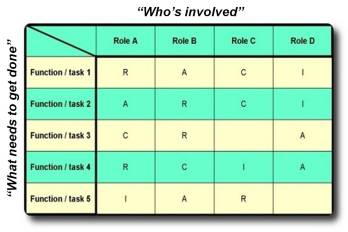I’ve been following the news stories over the last several days about General Motors’ report of what led to the delay in addressing their defective ignition switches for so many years. Report to Board of Directors of General Motors Company Regarding Ignition Switch Recalls, dated May 29, 2014, by Anton R. Valukas, of Jenner & Block. The full report can be found on The New York Times website here.
I know nothing about the manufacture of automobiles, nor about the regulatory requirements for reporting defects. But I do know something about corporate culture, and the aspects of the GM report that touch on their corporate culture have fascinated me.
How many of the following aspects of the GM culture sound familiar to you?
- The GM Nod—when everyone nods in agreement at the meeting, but leaves the meeting with no intention of following through on any action
- The GM Salute—when employees cross their arms and point their fingers outward at other people, indicating that someone else is responsible for making a decision or handling a problem
- Information Silos—where one department doesn’t know what another has done, so doesn’t have the information to address the problem
If your organization doesn’t have these precise examples of passive-aggressive management behavior, I’ll bet it has something similar. It doesn’t matter if you work for a corporation, a non-profit, a governmental agency, or in academia. These types of nonproductive behavior can be found in any organization.
In essence, the GM report states that the investigation revealed witnesses who said there was a reluctance first to report problems and then to deal with issues when they became known. But that is a frequent development in insular organizations with hierarchical structures. In these environments, no employee wants to be the bearer of bad news, nor to have the responsibility of fixing the problem.
 And often in large corporations, no single person controls decision-making. Sometimes the person responsible can’t even be identified.
And often in large corporations, no single person controls decision-making. Sometimes the person responsible can’t even be identified.
How many RACI (Responsibility, Approval, Consultation, Information) matrixes have you seen in organizational design meetings. These forms designate which employees are Responsible for the decision, which employees must Approve it, which must be Consulted, and which must be Informed? (Sometimes other terms are used, but the general concepts are the same.)
Regardless of the terminology used, with all these people involved, even the manager who makes the decision on paper often does not make the decision in reality—because the system is deliberately designed to include too many people and take too much time.
So the decision gets made—if it gets made at all—in a back room, after the meeting.
Remember: Every system is perfectly designed to get the results it gets.
In this case, GM has fired some managers and recommends some overhauling of its management structure and culture. But remember—every system is perfectly designed to get the result it gets.
And no design is perfect.
When has your organization made poor decisions because of its culture?




Sara,
I’m a small business type of guy. General Motors is so big, I can see how major problems can surface and continue. Here’s one way: a few decades ago, when GM bought Ross Perot’s company (an IT company, as I recall), Mr. Perot discovered a serious flaw at the top. “The executives at General Motors don’t drive, or even ride in, Chevys.”
Thus, the actual corporate culture was insufficient.
I’m going to suggest a promotional statement that would allude to a proper culture. I offer it free of charge to the well-fined General Motors.
The company president, in a tv commercial: “General Motors makes cars I’d like to drive…cars I’d trust to safely transport me and my family.”
That message would be directed to potential customers, AND to its employees. Safety would not be just seen as another cost to the company, but as a goal to fanatically pursue.
I agree 100% that if GM executives are not driving their own vehicles they have a serious problem.
Thanks for the comment.
Sara